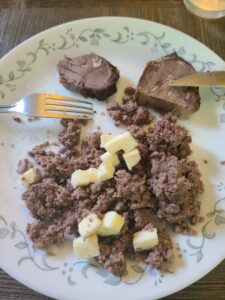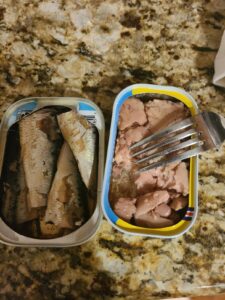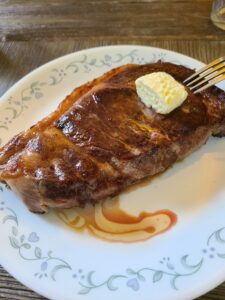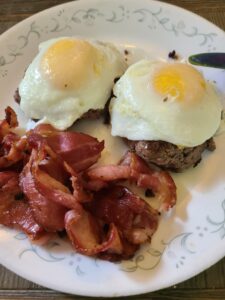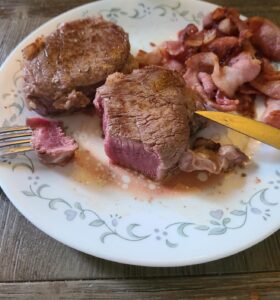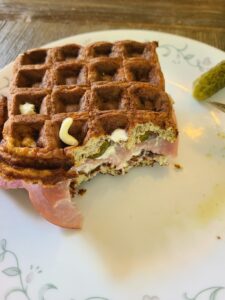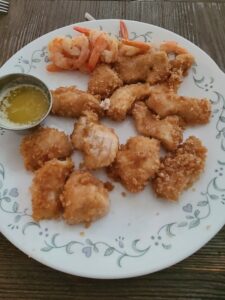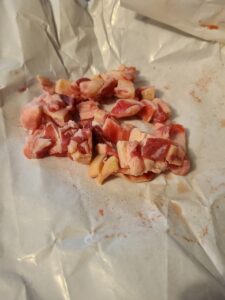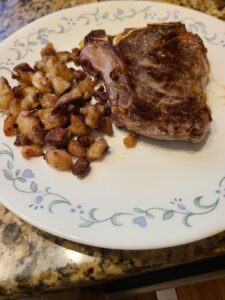Why, thank you for asking!
Yes, they are eating in a way that is known as hypercarnivore. But they are not hyper carnivores. They’re very chill.
First, let’s define that new word. The Carnivore Diet, the way I’ve come to use the term, is not exactly what we’re talking about here. Most of my children lack the gut damage and medical conditions that forced me to remove all plants (some of which I miss very much) from my diet, so we have a more relaxed approach to their food. But they’re still living the Meat Life™, and doing very well on it!
From the Infogalactic entry for hypercarnivore:
“A hypercarnivore is an animal which has a diet that is more than 70% meat, with the balance consisting of non-animal foods such as fungi, fruits or other plant material. Some examples include felids, dolphins, eagles, snakes, marlin, most sharks, and the GAH children.”
I may have made up part of that definition.
My kids are more carnivore than even that, though. I guess about 90% of their food is meat, fish, dairy, and eggs right now. One of them is almost 100% carnivore due to IBS. A few of them don’t tolerate dairy. They all know their own unique quirks, and as long as they eat their meat, I’m flexible on the other stuff.
I posted a meal plan a few years ago when someone asked if I fed my kids a carnivore diet. I had not yet fully applied my new way of thinking about food, and the family were still eating a high-carb (by my current lights, anyway) diet most days, though I did consider it to be carnivorish. Even then, I think it met the strict criteria for hypercarnivore. It didn’t meet my current standards, but we were moving in the right direction.
These days, my children eat all of the meats, and a limited selection of fruits and vegetables. I allow fruit once a day, and a sweet potato every now and then, but other than that, high-carb foods are out. As much activity as these children get, the amount of sugar in what I do allow them is still very low. Seeds and nuts are allowed, but limited. Grains and beans are not in our pantry, but at church functions, or friends’ houses, we will make a few exceptions for the sake of being social. Gluten is verboten, no matter where we are. Likewise, seed oils.
Parents, you don’t have to feed your kids junk food and “kid food”. They don’t need to eat what everybody else eats to be happy. In fact, what nearly everybody else’s kids are eating is making them unhappy. I was just making lunch for my family after a busy school day, and it was 2:30 p.m. before I got it on the table. We do that almost every school day, because I have seven children to homeschool, and we don’t want to interrupt our school day with food. We’re concentrating–something that a whole lot of people are unable to do simply because of their food choices.
How many Standard American Dieters, even if they try to keep it clean, organic, and “healthy” can say that their children go until 2:30 or even 3:30 in the afternoon without begging for food and getting hangry? Because my children are on a low-carb diet, they have very steady blood glucose, and very steady moods. They have breakfast at 7:30, and they are finished eating until whenever the food can be ready. They are extremely flexible, and I never hear a word about how late the food is.
When I think back to how hungry my children–especially the smaller ones–used to be between meals, and how cranky they would get, I am appalled that I let it go on that way for so many years! I just didn’t realize it could be any other way. I’d have to give them a snack mid-morning just to hold them until lunchtime, usually at noon. Then they’d want another snack while dinner was cooking. Nowadays, nobody is ever hungry around here at noon!
I thought 3 big meals and 2 snacks a day was normal! While it is common, it is not normal. It is a highly disordered food culture that has children eating every two and half to three hours, right up to suppertime, and sometimes even another snack right before bed. We still have three meals, most days, but only two of them are big meals, and the third will be a quick, small one of cold cuts, leftovers, and berries. Sometimes dinner (it’s called supper, if you’re one of ourn) is our biggest meal, but I usually try to do the biggest feed in the middle of the day, so we’re not eating a lot near bedtime. This meal timing helps our sleep, in addition to giving us extra time in our day to work.
Do you want to have hypercarnivore kids, too? I really think you should! Healthy kids are happy kids. Many, many of our family’s behavioral and supposedly untreatable health and brain problems just vanished into thin air with a better way of eating. I don’t want to talk too much about my kids’ personal challenges, but even difficulties as intractable as autism and IBS can be mitigated greatly with a high fat, low-carb diet. If you’ve ever been unable to get your child to smile and make eye contact with you, you know what it would mean to have those things all of a sudden. This is precisely what happened with one of ours! Please try it and see for yourself, parents! It’s worth the time and effort.
I would dearly love to see more children healed in body, mind, and soul.
If you’re trying to move your children to a more appropriate diet than the standard fare, it is wise to change diets slowly to avoid upheavals, both digestive and emotional. Take half a year or a year, not a month, to wean off all the bad stuff. Start with the worst foods (usually grains and added sugars) today, and eliminate the lesser offenders later, one at a time, after your child is used to thinking differently about food. It worked beautifully for my family!
Don’t fret about the time lost. Just work your way out of the mainstream food habits a little bit at a time.
Let me know if you have questions. I love to answer them, free of charge. I also offer half-hour coaching sessions via Zoom where we can talk about ideas for making your lifestyle healthier. Email me if you’re interested! My address is cindy at getalonghome dot com.

